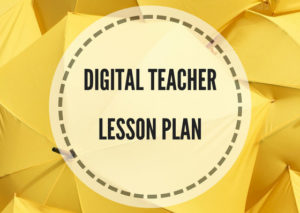 In this lesson, students discuss the influence of technology on education. It is a perfect fit for C1 / CAE students and it comes with exam style activities. It is based on a BBC News article. It takes approximately 45 minutes to complete.
In this lesson, students discuss the influence of technology on education. It is a perfect fit for C1 / CAE students and it comes with exam style activities. It is based on a BBC News article. It takes approximately 45 minutes to complete.
The Task
Warm-up ( 5 mins)
Ask your students to brainstorm activities which used to be traditionally done by humans but are now being increasingly performed by machines/computers:
- self-service check-out lines at supermarkets
- online check-in at the airport
- self-driving trains
See whether teaching comes up.
Vocabulary based predictions (10min)
Whether your students mentioned teaching in the brainstorming phase or not, tell them you are about to discuss certain changes in education. Distribute the USEFUL VOCABULARY tables among your students. Tell them these expressions come from a short BBC article, part of which they are about to read in a minute. Ask them to predict what the article might be about based on the vocabulary provided.
Don’t rush this stage of the lesson. Give your students plenty of time to digest the vocabulary, discuss the meaning and ways to use it. Familiarise yourself with the article to know the broader context for the language provided (all but the 1st one come from the text).
Use of English gap fill activity (10 mins)
Once your students come up with the idea what the article might be about, move on to the GAP FILLING. The aim here is two-fold: for your students to confirm their assumptions and to practice Use of English part 2 task.
Find out briefly what your students thought about the digital teacher situation. Using the part of the article and looking back the Useful Expressions table, you might try to brainstorm areas where robots in education affect teaching as such ( it is going to come up in the next part of the lesson)
Discussion + error correction (15 mins)
Students should work in pairs or groups of 3. Each group receives a copy of the DISCUSSION assignment which lists different aspects of robots being used in education. First, let your students think of arguments they could use discussing each topic. Refer them back to the Useful Vocabulary table. Which expressions would be handy discussing which topics?
Before the discussion begins, point out that the task is modeled after Speaking Part 3 in the exam so your students should remember about interacting with each other and maintaining a coherent discussion.
Monitor the task, jot down their errors and examples of well-used language.
*Adding a twist: students share the Useful Expressions table and when they manage to use one of the expressions they cross it out using different colours. They get one point for each expression used.
At the end of the discussion stage, ask your students how easy/difficult it was for them to use the expressions from the table. Try to come up with relevant examples employing the most challenging expressions together.
Wrap-up (5 mins)
See whether your students think teachers should, in fact, worry about their jobs.
You might refer them to the article to read it in full and write a 150-180 word response based on what you discussed in class (one of my students entitled hers “Hey Teachers, robots are coming for your jobs” 🙂 ).
Check out some more lessons prepared with CAE students in mind here, here, and here .
Personal Experience
I personally find the topic of technological advancement fascinating although it does not always strike a chord with my students. This class proved quite engaging as education is relevant to all the learners I work with. Their opinions were diverse enough to make for an interesting discussion. What turned out to be the biggest hit was the list of useful expressions lifted from the press article. My students appreciated this ready-made list of new vocabulary they could immediately try putting into practice.
Materials


This is brilliant going to try this in the morning with my Cae students.
That’s fantastic, Brian! I’d love to know how it went.